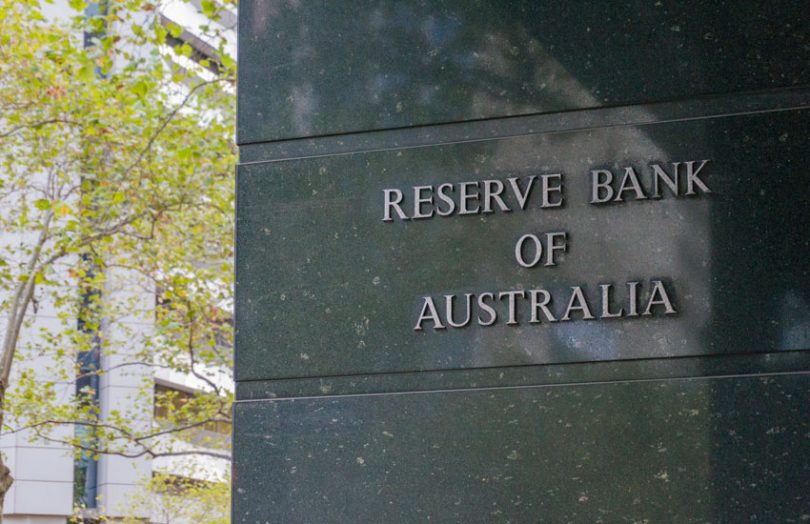
The Reserve Bank of Australia (RBA) maintained the cash rate at its historic low of 0.1% but it appears adamant that it would keep the cash rate steady unless targets are met “sustainably”.
RBA Governor Philip Lowe said while the Omicron outbreak has affected the economy, recovery maintained its resilience.
“The RBA's central forecast is for GDP growth of around 4.25% per cent over 2022 and 2% over 2023,” he said.
“This outlook is supported by household and business balance sheets that are in generally good shape, an upswing in business investment, a large pipeline of construction work and supportive macroeconomic policy settings.”
Despite the improvement in the recent headline inflation data — which came in stronger than expected at 1.3% — Mr Lowe said it is early to conclude that it is sustainably within the target band.
“There are uncertainties about how persistent the pick-up in inflation will be as supply-side problems are resolved,” he said.
“Wages growth also remains modest, and it is likely to be some time yet before aggregate wages growth is at a rate consistent with inflation being sustainably at target.”
Furthermore, Mr Lowe noted that while it has ceased quantitative easing, it does not imply any “near-term increase” in interest rates.
What do experts think?
Proptrack economist Paul Ryan said despite the central bank’s decision, the rising trend in mortgage rates, particularly for fixed rates, is likely to continue.
“All eyes are on the RBA’s updated forecasts and guidance for when the cash rate will increase — this will bring bigger increases to borrowing rates for all borrowers,” he said.
“Many are picking that to be later this year, much sooner than the RBA has previously indicated.”
Mr Ryan said labour market and inflation outcomes have already exceeded the central bank’s expectations, which would increase likelihood of cash rate increases this year.
“Interest rate increases earlier than the RBA has previously indicated will slow housing price growth further, by increasing repayments and reducing borrowing amounts for prospective buyers,” he said.
CreditorWatch chief economist Harley Dale said the RBA is likely keeping a watch on the economy as a rate hike could potentially impact certain sectors, particularly the small- and medium-sized enterprises (SME).
“There is simply too much weight against a short-term rate hike from the RBA, regardless of what residential housing property prices are doing,” he said.
“The RBA recognises that a rise in market interest rates will fulfil the opening stanza of a tightening credit environment for SMEs and that’s an important element of Australia’s emerging economic recovery that SMEs need to be cognisant of."
“The RBA can stay put for a considerable time and communicating that stance to SMEs in a transparent manner would be very helpful to Australia’s economic prospects — Australia has already endured two sets of recessionary conditions and the RBA moving too soon will create a third.”
Wealthi co-founder Peter Escho believes the central bank has now shifted gears and is likely to increase rates this year.
“By ending its bond-buying program, the RBA is setting the stage for the inevitable which will be consecutive rate rises from an ultra-low level currently,” he said.
“The RBA’s statement noted a modest slowdown in the rate of property price growth in recent months — we believe that will continue, with investors shifting their focus from capital gains to income growth in the coming year.”
Owner-occupier lending picks up
The latest lending figures from the Australian Bureau of Statistics came alongside the RBA’s hold decision.
According to the latest data, owner-occupiers bounced back at the end of 2021 to produce the biggest year of home loans on record.
Housing Industry Association (HIA) economist Tom Devitt said the total value of housing loans issued in 2021 reached almost $371bn, up by 51% on the previous year and the strongest year since records began in 2002.
“This was driven by owner occupiers, accounting for over $260bn of the total in 2021, up by 43% on the previous year,” he said.
First home buyers accounted for $74bn worth of housing loans in 2021, up by 30.3% on the previous year.
“While loans to first-home buyers have come down in recent months, this cohort remains much more active in the market than it did before the pandemic,” Mr Devitt said.
Investor loans also recorded strong growth, accounting for $106bn worth of housing loans in 2021, representing a 75% grain from the previous year.
“The pandemic has forced people to spend a lot more time at home, resulting in demand for greater amenity,” he said.
“This is being found in both moving to a new home or renovating the home people already have.”
Collections: Mortgage News Interest Rates



Share